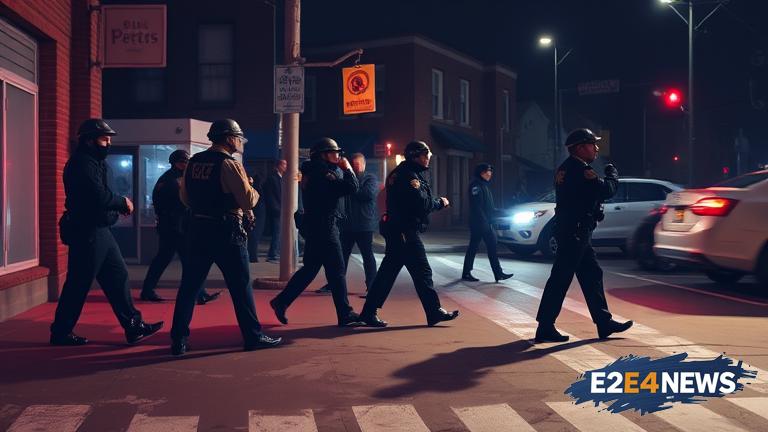The United States has witnessed a significant increase in violent crime rates over the past year, with a notable rise in homicides, aggravated assaults, and robberies. According to recent data, the overall violent crime rate has increased by 5.6% compared to the previous year, with some cities experiencing even more drastic spikes. This trend has sparked widespread concern among law enforcement agencies, policymakers, and citizens, who are calling for urgent action to address the root causes of this surge. Experts point to a range of factors contributing to the increase, including the COVID-19 pandemic, economic instability, and social unrest. The pandemic has exacerbated existing social and economic inequalities, leading to increased stress, anxiety, and desperation among vulnerable populations. Furthermore, the rise of social media has created new platforms for violent ideologies to spread, radicalizing individuals and fueling extremist movements. Law enforcement agencies are facing significant challenges in responding to this surge, with many departments struggling to cope with limited resources, inadequate training, and outdated strategies. To combat this trend, many cities are investing in community-based initiatives, such as job training programs, mental health services, and youth mentorship schemes. These programs aim to address the underlying causes of violence, providing support and opportunities for at-risk individuals to turn their lives around. Additionally, there is a growing recognition of the need for increased funding and support for law enforcement agencies, including investments in technology, training, and personnel. The federal government has announced plans to allocate additional resources to support local law enforcement efforts, including grants for community policing initiatives and funding for crime prevention programs. However, critics argue that more needs to be done to address the systemic issues driving this surge, including poverty, racism, and social inequality. The rise in violent crime rates has also sparked debates about gun control, with many advocates calling for stricter regulations on firearms and increased support for gun violence prevention programs. As the situation continues to unfold, it is clear that a comprehensive and multifaceted approach is needed to address the complex factors driving this surge. This will require sustained efforts from law enforcement agencies, policymakers, community leaders, and citizens alike, working together to build safer, more resilient communities. The US Department of Justice has launched a series of initiatives aimed at reducing violent crime, including the creation of a new task force focused on combating gang violence and a nationwide campaign to promote community-based crime prevention strategies. Meanwhile, local law enforcement agencies are exploring innovative approaches to policing, including the use of data analytics, social media monitoring, and community outreach programs. Despite these efforts, the road ahead will be challenging, and it will likely take time, patience, and perseverance to see significant reductions in violent crime rates. Nevertheless, by working together and adopting a comprehensive, evidence-based approach, it is possible to create safer, more just communities for all. The ongoing surge in violent crime rates serves as a stark reminder of the need for sustained investment in community-based initiatives, law enforcement agencies, and social programs. As the US continues to grapple with this complex issue, it is essential to prioritize a nuanced, multifaceted approach that addresses the root causes of violence and promotes community-led solutions. By doing so, we can work towards creating a safer, more equitable society for all citizens.
